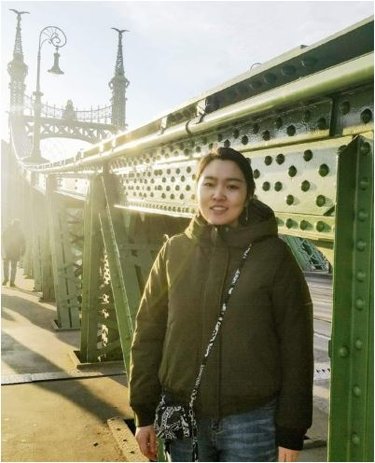Design and applications of gold nanoparticle/hydrogel composites with stimuli-responsive polymers
The defence of Jinmeng Hao will take place (partly) online.
The PhD defence can be followed by a live stream.
Jinmeng Hao is a PhD student in the research group Sustainable Polymer Science (SPC). Supervisor is prof.dr. G.J. Vancso from the Faculty of Science & Technology (S&T).
 This Thesis describes the design, synthesis and applications of a series of gold nanoparticle-stimuli-responsive hydrogel nanocomposites. PFSs are a fascinating class of redox-active metallopolymers with a backbone consisting of alternating redox-active ferrocene and organosilane units. PFS-based redox-responsive hydrogels are used as foundry for the in-situ formation of gold nanoparticles (AuNPs) in this Thesis. Taking advantage of the combination of a thermo-responsive PNIPAM hydrogel and the photothermal effect of the AuNPs,the deformation and surface morphology changes of the hydrogel composites can be controlled by both temperature and light irradiation. By designing different anisotropic hydrogel structures, a variety of applications including wrinkling bilayers and actuators are explored in this Thesis. Regarding stoichiometry investigations, we considered the electrochemical redox process during AuNP formation and offer a model explaining the source of the electrons in addition to ferrocene.
This Thesis describes the design, synthesis and applications of a series of gold nanoparticle-stimuli-responsive hydrogel nanocomposites. PFSs are a fascinating class of redox-active metallopolymers with a backbone consisting of alternating redox-active ferrocene and organosilane units. PFS-based redox-responsive hydrogels are used as foundry for the in-situ formation of gold nanoparticles (AuNPs) in this Thesis. Taking advantage of the combination of a thermo-responsive PNIPAM hydrogel and the photothermal effect of the AuNPs,the deformation and surface morphology changes of the hydrogel composites can be controlled by both temperature and light irradiation. By designing different anisotropic hydrogel structures, a variety of applications including wrinkling bilayers and actuators are explored in this Thesis. Regarding stoichiometry investigations, we considered the electrochemical redox process during AuNP formation and offer a model explaining the source of the electrons in addition to ferrocene.
In Chapter 1, a general introduction to the topics related to the research are presented.
In Chapter 2, a literature review covering AuNPs, stimuli-responsive hydrogels, nanocomposite hydrogels and anisotropic hydrogels is provided. The utility of stimuli-responsive hydrogels in AuNP synthesis is highlighted. The structure design and applications of nanocomposite hydrogels, especially of AuNP/hydrogel nanocomposites, are introduced.
In Chapter 3, a bilayer consisting of a compliant poly(acrylamide) (PAAm) bottom layer and a rigid AuNP nanocomposite poly(N-isopropylacrylamide) (PNIPAM) PNIPAM/PFS hydrogel film is described. PFS chains are incorporated in the PNIPAM hydrogel layer, and employed as a reducing agent for the in-situ formation of AuNPs by using the redox properties provided by the PFS segments. The bilayer is made by a stepwise process in which the rigid top layer is crosslinked with UV irradiation first, followed by crosslinking of the PAAm hydrogel layer.
Wrinkles form on the bilayer surfaces as the top layer swells up in water, which makes the compressive strain exceed a theoretically established critical value. Semi- infinite bilayers show the formation of random wrinkle patterns on the surface due to the isotropic stress distribution. Narrow bilayer hydrogels with defined dimensions show uniaxially aligned wrinkles parallel to the edge because the stress relaxation takes place in the edge and stress is uniaxially accumulated in the perpendicular direction. Wrinkles disappear with light irradiation or by placing the bilayer in hot water, which shrinks the PNIPAM hydrogel and thus reduces the swelling strain. The random and aligned wrinkle patterns are used as tunable isotropic and anisotropic light diffusors.
In Chapter 4, a series of bilayer hydrogels with different surface patterns showing various dynamic pattern evolutions are described. The ingredients of the top layer and bottom layer are the same as for the bilayer described in Chapter 3 but different degrees of crosslinking were employed. Owing to the different compressive/swelling strain of the top layer and variations in the top layer-substrate modulus ratio, wrinkles (herringbone, stripes, labyrinth), creases and folds are formed on the surfaces when the top layer swells. In order to investigate the dynamic evolution of the patterns, the compressive strain was controlled by swelling the bottom layers for different periods of time, which decompresses the top layer gradually with time increasing. The transition of stripe patterns to weave-like patterns, the change of jog angle in herringbone patterns, transitions of Y shape folds to I shape folds to flat surfaces are observed and explained by the change of the stress state in the bilayers.
In Chapter 5, an anisotropic AuNP/PNIPAM/PVA nanocomposite hydrogel was synthesized. Different from previous chapters, the AuNPs were formed with PVA as a reducer and stabilizer in hot water. A semi-interpenetrating polymer network (semi-IPN) hydrogel of an AuNP/PVA/PNIPAM nanocomposite was first prepared, then further physically crosslinked into a full-IPN by cyclic freeze drying of pre-stretched hydrogel followed by annealing treatments. This AuNP/hydrogel nanocomposite displays a fast and reversible anisotropic change in size with temperature or light stimuli, enabling it to be used as actuator in future applications.
In Chapter 6, we study the phenomenon described in Chapter 3 and 4, where extra-stoichiometric amounts of AuNPs are formed in the reduction process of HAuCl4 to AuNPs in PFS hydrogels. In order to gain more insight into the source of the extra electrons, PFS/PNIPAM hydrogels are fully oxidized first and then are allowed to react with HAuCl4. We find that the redox state of PFS barely has any impact on the amount of AuNPs formed. Combined with a change in pH, we propose a hypothesis that water reduced the uncomplexed Au3+ moieties, catalyzed by Fc or Fc+.
As an outlook, in Chapter 7, a disulfide-functionalized PFS with a well-controlled composition is presented. Based on the Au-thiolate interaction, thiolated PFS chains were used as inks for printing on microelectrode arrays, synthesizing and assembling gold nanoparticles simultaneously and fabricating self-healing nanocomposite hydrogels.
